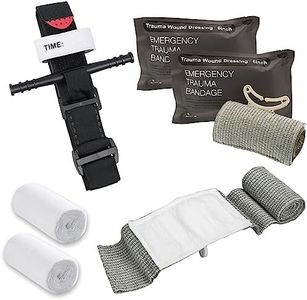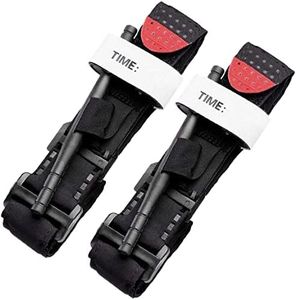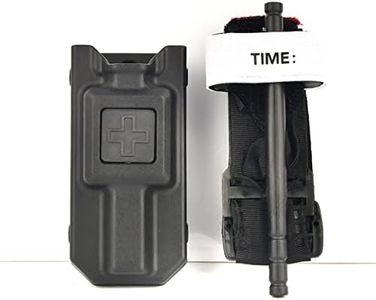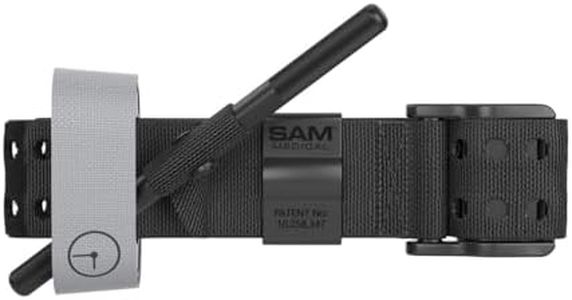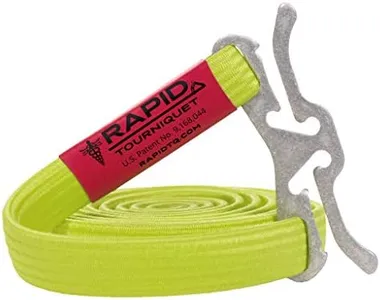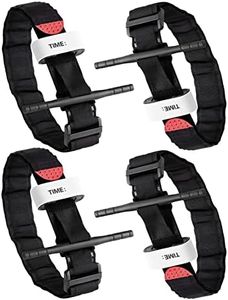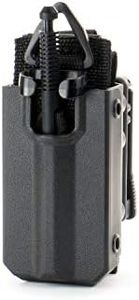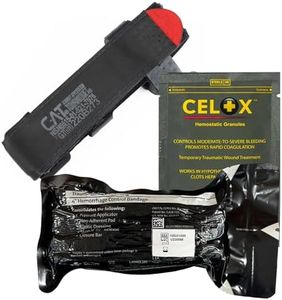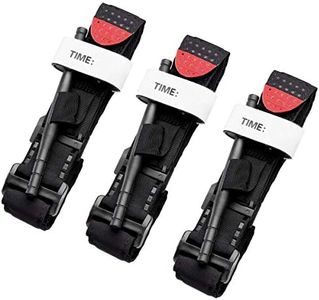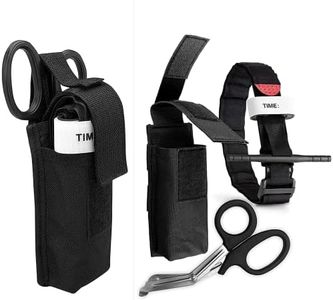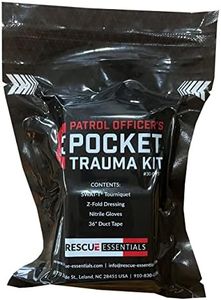We Use CookiesWe use cookies to enhance the security, performance,
functionality and for analytical and promotional activities. By continuing to browse this site you
are agreeing to our privacy policy
10 Best tourniquets
From leading brands and best sellers available on the web.Buying Guide for the Best tourniquets
Choosing the right tourniquet is a critical decision, especially since it is a life-saving tool designed to stop severe bleeding. The best approach is to understand what you're likely to use it for—everyday carry, first aid kits, hiking, or professional settings. Reliability, ease of use, and suitability for different situations should be top priorities. Think about who might use the tourniquet, what situations might arise, and how quickly you need to apply it. The easier and more intuitive a tourniquet is to use, the more effective it will be in an emergency.Type (Windlass, Elastic, Pneumatic, Ratcheting)This refers to the main design of the tourniquet, which affects how it's applied and how effective it is. Windlass tourniquets use a stick to tighten a band, elastic models rely on stretching and wrapping, pneumatic ones use air, and ratcheting types use a mechanism to tighten. Windlass tourniquets are widely regarded for their reliability and speed, making them popular for emergencies. Elastic types are lighter and quick for self-application but usually work best for smaller limbs or less severe bleeding. Pneumatic are mostly for controlled medical environments, and ratcheting can provide consistent pressure and are easy for some people. Choose the type that best fits your intended use and comfort with applying the device: for high-pressure, critical scenarios, windlass or ratcheting are often best; for compact, everyday carry, elastic might be useful.
Width of the BandThis is how wide the part that goes around your limb is, typically measured in inches or centimeters. Wider tourniquets are generally safer and more effective because they distribute pressure over a larger area, reducing the risk of damaging nerves or tissue. Narrower bands can work but may increase risk of injury with improper use. If you're looking for something robust for adults or general use, go with a wider band—generally at least 1.5 inches. For compact kits or use on children, a slightly narrower one may be considered, but always prioritize safety.
Application Ease (One-handed Use)Ease of application refers to how simple it is to put the tourniquet on quickly, especially with just one hand—which can be vital if you're injured and alone. Some tourniquets are designed specifically for easy, one-handed use, while others may require two hands or are trickier to position. When choosing, look for models that clearly state they can be applied one-handed. Practice applying it before any emergency because in a crisis, quick, confident use can save lives.
Material DurabilityThe material used determines how tough and reliable the tourniquet is. Durable synthetic fibers, reinforced plastics, and sturdy stitching are hallmarks of a quality product. A flimsy or poorly made tourniquet can fail in a crisis. Consider where you will keep the device: if it will be in a car, backpack, or exposed to weather, durability becomes even more important. Prioritize models that are reviewed or recommended for their strength and materials.
Size and PortabilityThis is all about how easy the tourniquet is to carry and store. Some are very compact and designed for pocket or small first aid kits, while others are bulkier but potentially faster and more robust in use. Think about where you want to keep it: if it’s for hiking, everyday carry, or outdoors, portability and weight matter. For home, car, or workplace kits, a larger model may be fine. Pick the size that you’re confident you’ll carry consistently, as an unused tourniquet can’t help anyone.


